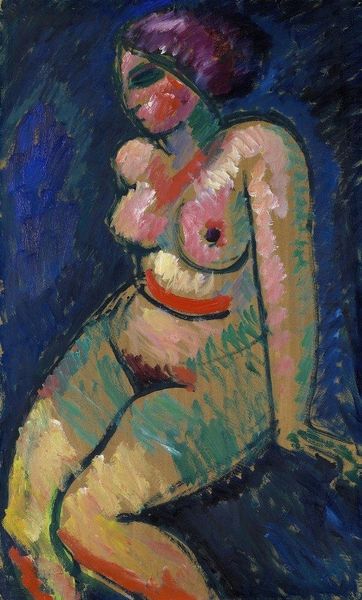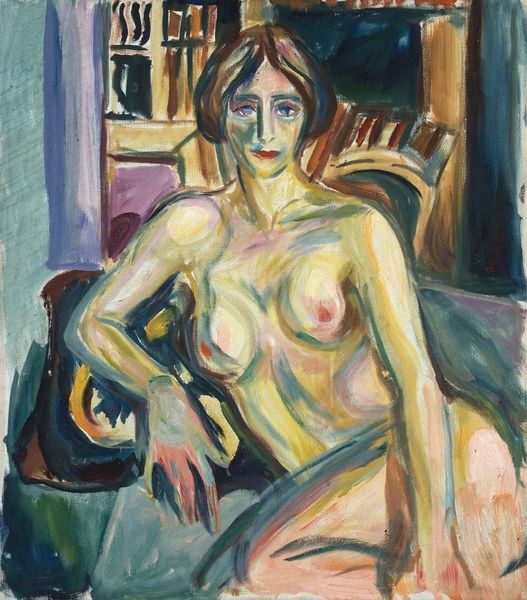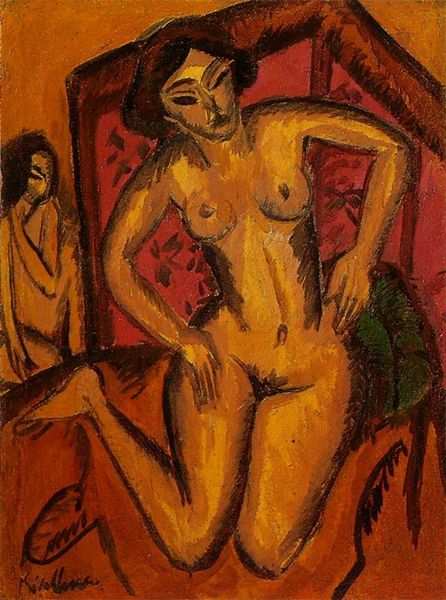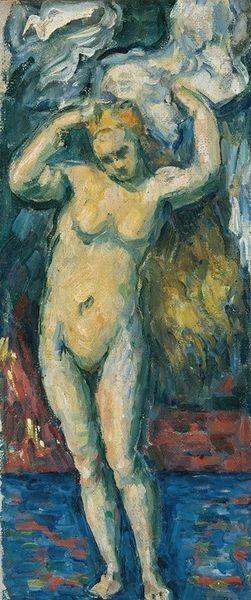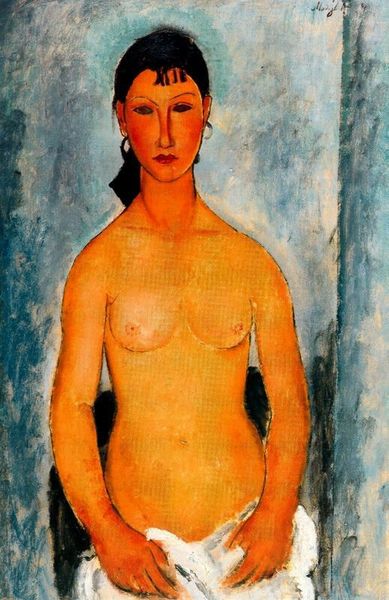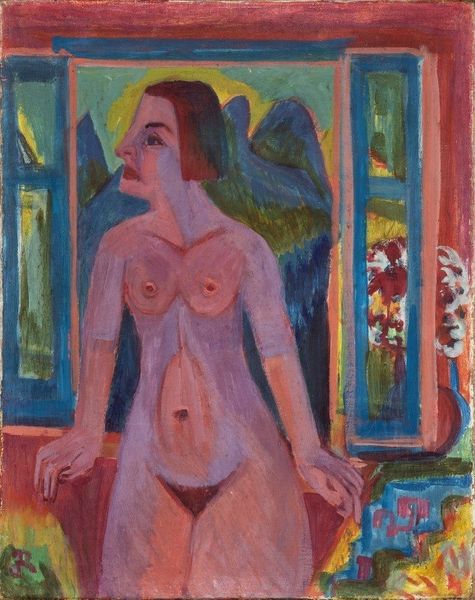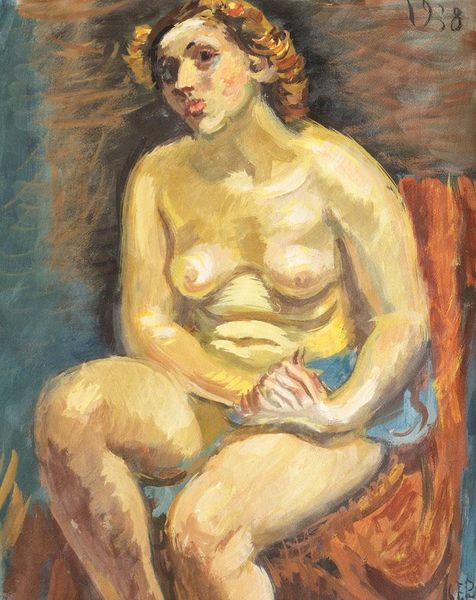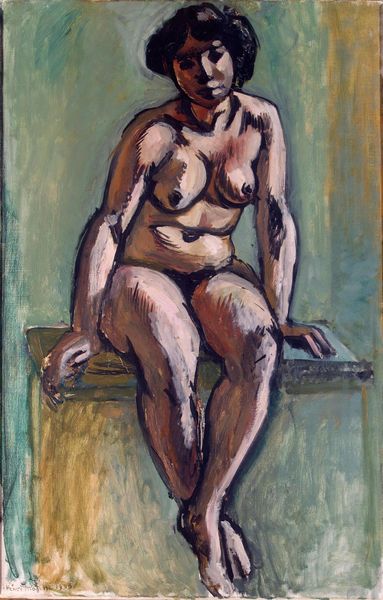
Copyright: Public domain
Curator: Ernst Ludwig Kirchner's "Capelli Rossi," or "Red Hair," completed around 1914. Painted in oil, it exemplifies his Expressionist approach to the female nude. Editor: My initial reaction is unease. There’s a starkness to the figure, a disquiet in the contorted pose and almost spectral palette, that resonates. Curator: Expressionism often grappled with conveying deep-seated emotional and psychological states. It's fascinating how artists such as Kirchner, sought to visually manifest such turbulence on canvas. The distorted form, with its angularity and lack of classical proportion, challenged traditional representations prevalent at the time. Consider how it reflects societal shifts. Editor: Precisely. It’s almost a modern Venus, stripped bare of idealization. That heavy necklace only accentuates the subject's vulnerability, a primitive talisman, a subconscious link to a lost Eden or a protective force against a harsh world. The intense red hair, a signifier for passion or danger, is offset against cold flesh tones. The symbol-laden narrative conveys this ambivalence. Curator: The "Brücke," the artist group to which Kirchner belonged, had a fascination for portraying modern city life alongside the body as a raw form. Viewing it today, one reflects upon their interest in dismantling bourgeois constraints, both artistic and social. This work participated in their overall objective of liberation, of revealing an essential rawness. Editor: There’s that direct gaze, confrontational and unflinching. This isn’t a passive object for the male gaze; she possesses agency, challenging societal perceptions through an intense color scheme. That green chair also is crucial. Color becomes an instrument that conveys not only the social commentary, but individual psychology as well. Curator: Absolutely. By displaying such intense feelings through radical brushstrokes, “Red Hair” functions as a powerful reminder of the changing roles of art, of artistic engagement, and its role in societal change. Editor: I see how Kirchner’s visual language, deeply steeped in the anxieties of his time, gave rise to an innovative and insightful way to depict the inner experience of life's challenging emotions.
Comments
No comments
Be the first to comment and join the conversation on the ultimate creative platform.
